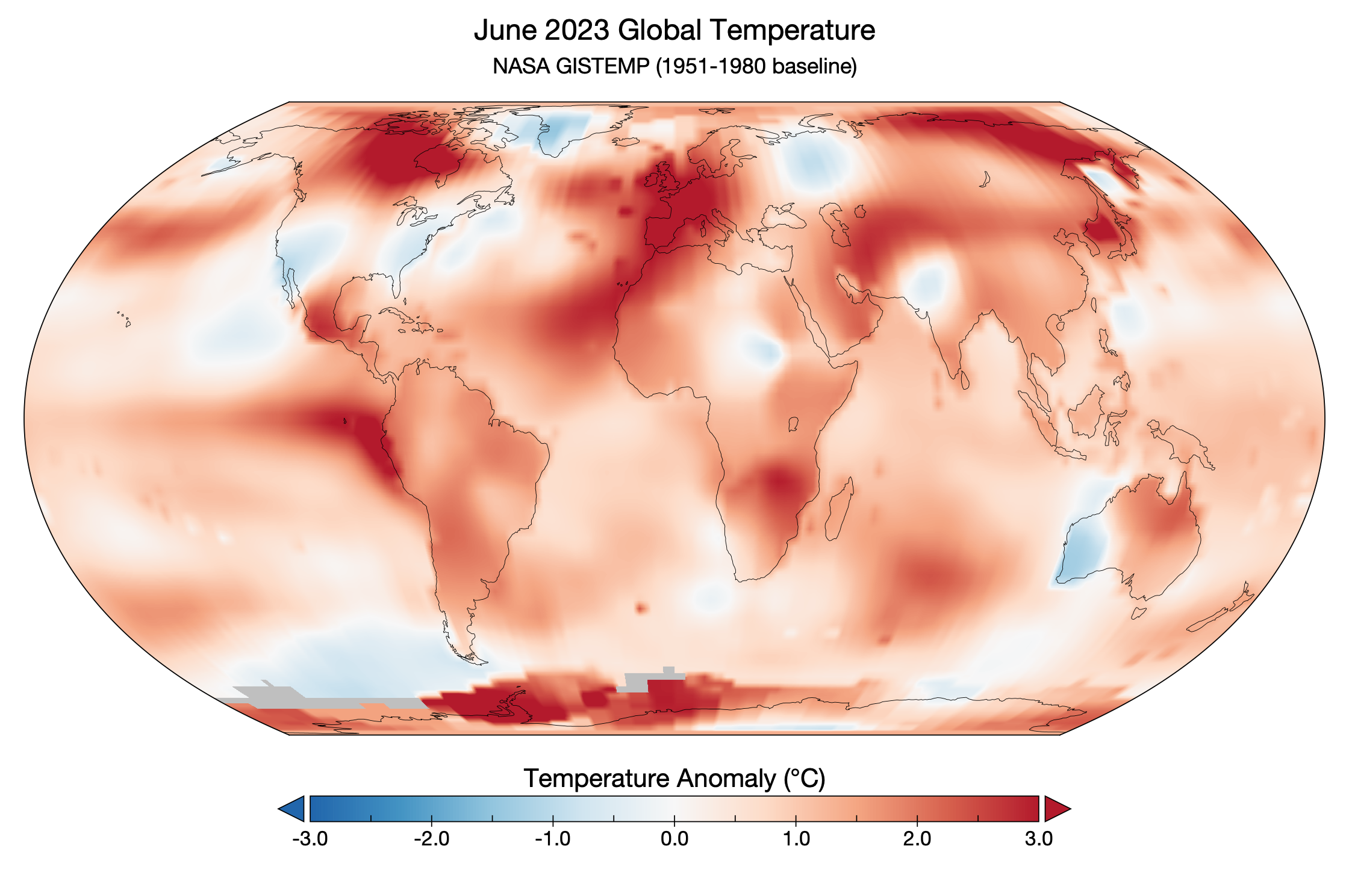News | July 13, 2023
NASA Finds June 2023 Hottest on Record

Global map of GISTEMP June surface temperature anomaly relative to the 1951-1980 June baseline. Most of the world is “red” due to warm anomalies, with the highest anomalies around Antarctica and Canada. Credit: NASA's Goddard Institute for Space Studies
June 2023 was the hottest June on record according to NASA’s global temperature analysis.
GISTEMP, NASA’s global temperature analysis, is drawn from data collected by weather stations and Antarctic research stations, as well as instruments mounted on ships and ocean buoys. NASA scientists at the Goddard Institute for Space Studies (GISS) in New York analyze these measurements to account for uncertainties in the data and to maintain consistent methods for calculating global average surface temperature differences for every year. These ground-based measurements of surface temperature are consistent with satellite data collected since 2002 by the Atmospheric Infrared Sounder on NASA's Aqua satellite and with other estimates. NASA uses the period from 1951-1980 as a baseline to understand how global temperatures change over time.
Independent analyses by the European Union’s Copernicus Climate Change Service and NOAA’s National Centers for Environmental Information likewise found June 2023 to be the warmest June in their records.





